Discover the beauty of nature with our guide to beautiful Trees that start with ‘A’. From majestic Aspens to charming Acacias, explore their unique characteristics and learn how to enhance your landscape with these captivating arboreal wonders.
When it comes to the natural world, few sights are as awe-inspiring as the majestic Trees that grace our landscapes. These towering giants come in a vast array of shapes, sizes, hues, each with its unique charm and significance. Among the multitude of tree species, some particularly captivating ones begin with the letter ‘A’.
In this comprehensive guide, we’ll explore the beauty of trees starting with ‘A’, unveiling their distinctive characteristics, cultural significance and the ways to incorporate them into your outdoor spaces.
1. Allegheny Serviceberry (Amelanchier laevis)
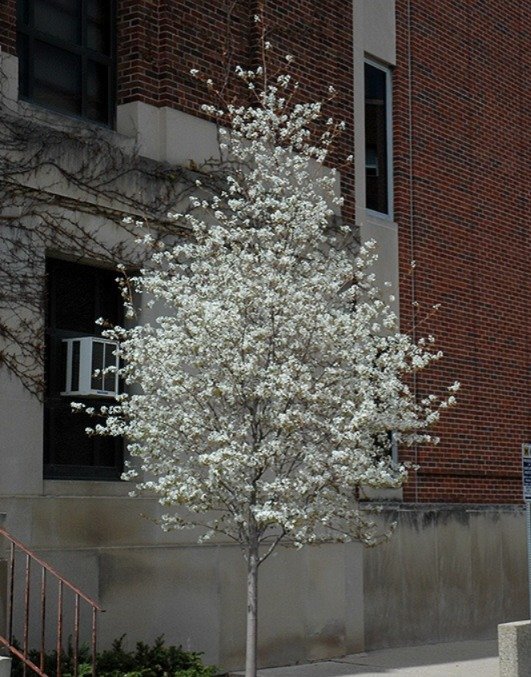
Here’s a short information chart about the Allegheny Serviceberry tree (Amelanchier laevis):
| Common Name | Allegheny Serviceberry |
|---|---|
| Scientific Name | Amelanchier laevis |
| Family | Rosaceae |
| Native Range | Eastern North America |
| Height | Typically 15-25 feet tall |
| Spread | 10-15 feet wide |
| Shape | Rounded |
| Leaves | Alternate, elliptical, finely toothed edges |
| Flowers | Clusters of white, star-shaped flowers in spring |
| Fruit | Edible berries (purplish-black) in early summer, attractive to wildlife |
| Fall Color | Orange-red to reddish-purple |
| Growth Rate | Moderate |
| Soil Requirements | Well-drained, prefers slightly acidic soil |
| Light Requirements | Full sun to part shade |
| Uses | Ornamental, wildlife habitat (attracts birds) |
| Special Features | Hardy, adaptable, attracts pollinators |
The Allegheny Serviceberry is a small, deciduous tree that offers a delightful display of beauty throughout the seasons. In early spring, it bursts into bloom with clusters of white flowers that later give way to edible, berry-like fruits that attract various bird species.
As the seasons progress, the Allegheny Serviceberry’s foliage transforms into a rich tapestry of oranges, reds and purples, creating a stunning autumnal display. Its smooth, gray bark and graceful form add interest to the winter landscape, making it a true four-season delight.
Native to eastern North America, this charming tree is a popular choice for residential gardens and urban landscapes due to its compact size and low-maintenance requirements. Its versatility allows it to be used as a specimen tree, in hedges or as part of a naturalized planting.
2. American Basswood (Tilia americana)

Here’s a short information chart about the American Basswood (Tilia americana):
| Common Name | American Basswood |
|---|---|
| Scientific Name | Tilia americana |
| Family | Malvaceae |
| Native Range | Eastern North America |
| Height | 60-80 feet tall |
| Spread | 30-50 feet wide |
| Shape | Pyramidal when young, rounded with age |
| Leaves | Heart-shaped, dark green, serrated margins |
| Flowers | Fragrant yellowish-white clusters in late spring to early summer |
| Fruit | Small nutlets within a persistent bract |
| Fall Color | Yellow-green to yellow |
| Growth Rate | Medium to fast |
| Soil Requirements | Moist, well-drained |
| Light Requirements | Full sun to part shade |
| Uses | Shade tree, ornamental, timber (soft wood) |
| Special Features | Important for honey production (nectar source for bees), attracts pollinators |
The American Basswood, also known as the American Linden, is a magnificent deciduous tree that boasts a stately presence and a rich history. This species is native to eastern North America and can reach heights of up to 80 feet (24 meters). creating a majestic canopy of heart-shaped leaves.
One of the standout features of the American Basswood is its fragrant, yellowish-green flowers that bloom in early summer, attracting a wide range of pollinators. These blooms later give way to small, nutlike fruits that are a valuable food source for wildlife.
In addition to its ornamental appeal, the American Basswood has significant cultural and economic importance. Its wood has been used for a variety of purposes, including furniture making, basket weaving and even the production of basswood honey.
3. Alligator Juniper (Juniperus deppeana)
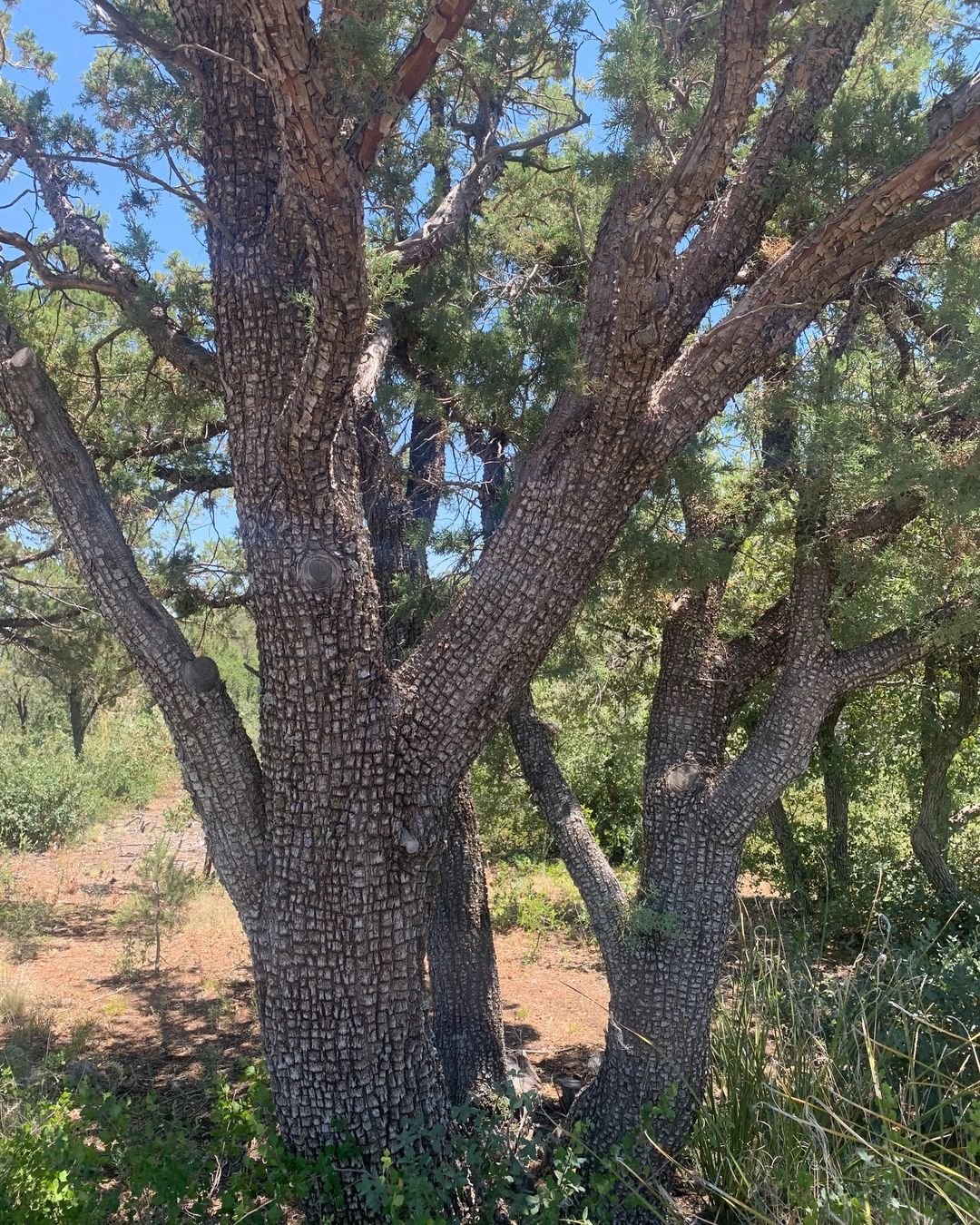
Here’s a concise information chart about the Alligator Juniper (Juniperus deppeana):
| Common Name | Alligator Juniper |
|---|---|
| Scientific Name | Juniperus deppeana |
| Family | Cupressaceae |
| Native Range | Southwestern United States and Northern Mexico |
| Height | Up to 40 feet tall |
| Spread | 10-20 feet wide |
| Shape | Conical when young, becoming irregular with age |
| Leaves | Scale-like, prickly, overlapping, dark green |
| Cones | Berry-like, spherical, up to 1 cm in diameter |
| Bark | Gray-brown, shreddy |
| Growth Rate | Slow to moderate |
| Soil Requirements | Well-drained, rocky |
| Light Requirements | Full sun |
| Uses | Ornamental, windbreaks, erosion control |
| Special Features | Unique bark texture resembling alligator skin, important wildlife habitat providing food and cover |
While not as well-known as some of its counterparts, the Alligator Juniper (Juniperus deppeana) is a unique and captivating tree that deserves recognition. This evergreen conifer is native to the southwestern United States and northern Mexico and is known for its scaly, alligator-like bark and twisted, gnarled branches.
The Alligator Juniper is highly valued for its hardiness and ability to thrive in arid environments. Its distinctive appearance adds character and interest to any landscape, making it a popular choice for xeriscape gardens and desert-inspired outdoor spaces.
When incorporated into landscaping, the Alligator Juniper can serve as a striking focal point or specimen tree. Its resilience and low-maintenance requirements make it an excellent choice for those seeking a beautiful and drought-tolerant addition to their
4. Acacia (Acacia)
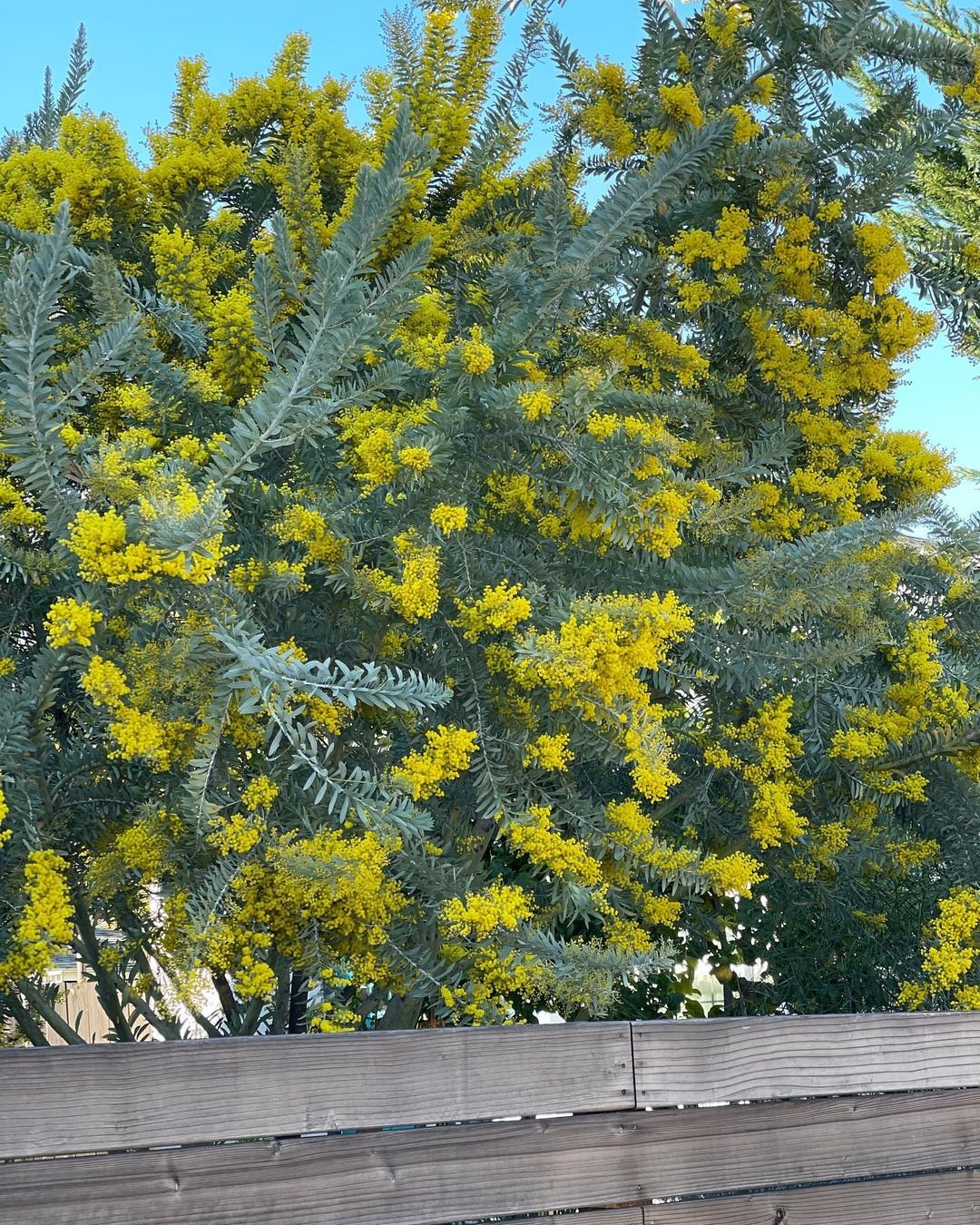
Here’s a brief overview of Acacia:
| Common Name | Acacia |
|---|---|
| Scientific Name | Acacia spp. (over 1,000 species) |
| Family | Fabaceae |
| Native Range | Native to tropical and subtropical regions worldwide, especially Australia and Africa |
| Height | Varies widely by species; from shrubs to large trees reaching over 30 meters (100 feet) |
| Leaves | Typically compound, often with small leaflets |
| Flowers | Small, often yellow or cream-colored, in dense clusters |
| Fruit | Pods or legumes containing seeds |
| Bark | Smooth to rough depending on species |
| Growth Rate | Fast-growing in favorable conditions |
| Soil Requirements | Variable; many species tolerant of poor soils |
| Light Requirements | Full sun |
| Uses | Ornamental landscaping, timber, gum production, erosion control, medicinal uses |
| Special Features | Many species are drought-tolerant and adapted to arid climates; important in arid and semi-arid ecosystems |
Hailing from the warm regions of Australia and Africa, the Acacia is a genus of shrubs and trees, renowned for their delicate foliage and vibrant yellow blooms. These hardy plants are well-adapted to survive in arid and semi-arid environments, making them a popular choice for xeriscape and drought-tolerant landscaping.
One of the most iconic Acacia species is the Wattle (Acacia pycnantha), known for its stunning golden-yellow blossoms that cover the tree in a blanket of color. This tree is not only visually striking but also holds cultural significance, serving as the national floral emblem of Australia.
When incorporated into your landscape, Acacia trees can add a touch of exotic beauty and resilience. Their ability to thrive in harsh conditions makes them an excellent choice for low-maintenance gardens and urban areas prone to water restrictions.
5. Alder (Alnus)
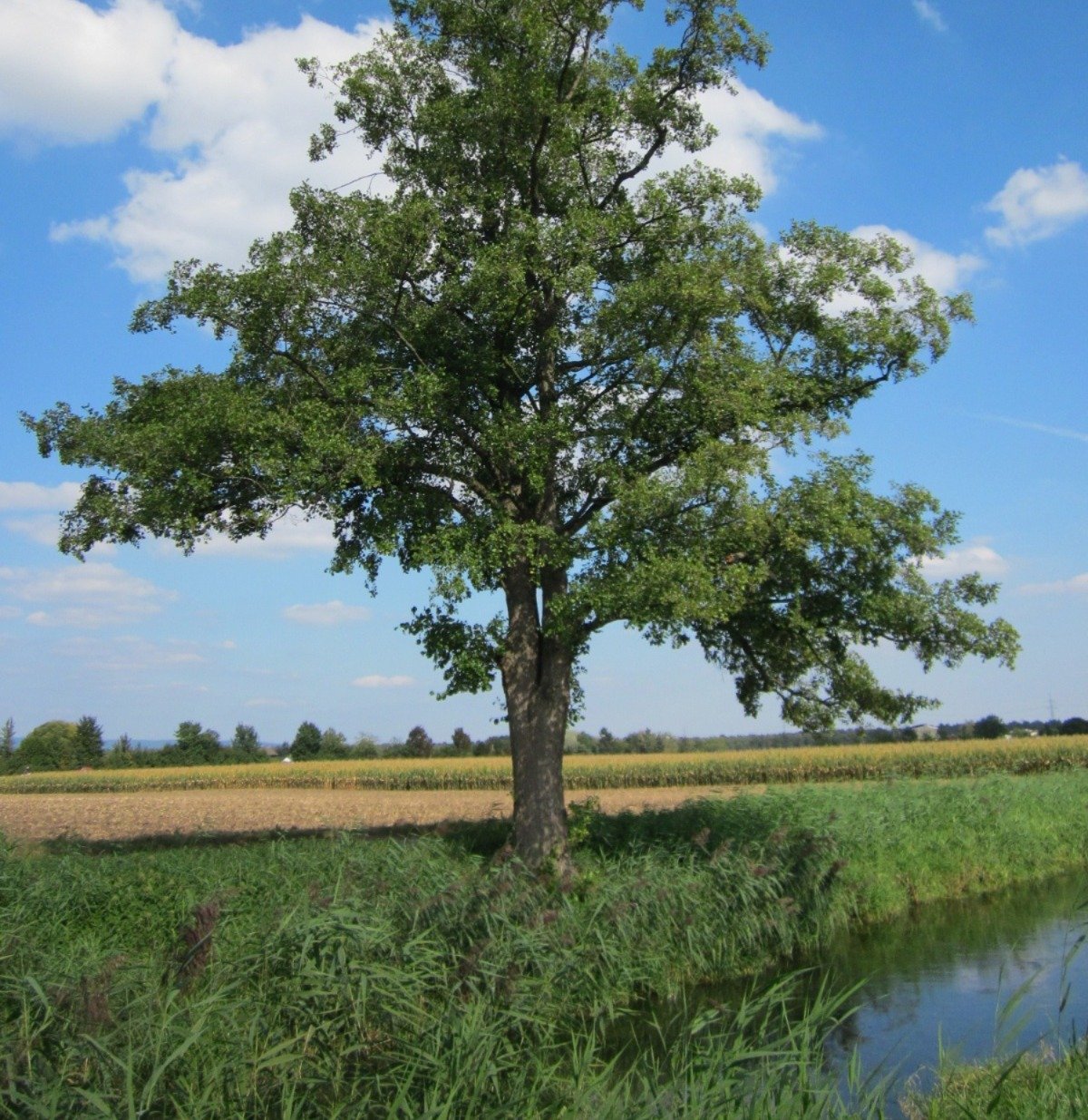
Here’s a concise information chart about Alder (Alnus):
| Common Name | Alder |
|---|---|
| Scientific Name | Alnus spp. |
| Family | Betulaceae |
| Native Range | Worldwide, primarily temperate regions |
| Height | Varies by species; typically 30-50 feet tall |
| Leaves | Alternate, simple, toothed margins |
| Flowers | Small, catkins (male and female separate) |
| Fruit | Conelike structures containing small seeds |
| Bark | Smooth when young, becoming rough and fissured with age |
| Growth Rate | Fast-growing |
| Soil Requirements | Moist, well-drained |
| Light Requirements | Full sun to part shade |
| Uses | Erosion control, riparian restoration, timber (soft wood), ornamental landscaping |
| Special Features | Nitrogen-fixing capabilities, important for stabilizing soils along water bodies |
Native to the Northern Hemisphere, the Alder is a genus of deciduous trees and shrubs known for their ability to thrive in wet, nutrient-rich soils. These trees are often found along streams, rivers and wetlands, where they play a vital role in stabilizing banks and preventing erosion.
One of the most recognizable members of the Alder family is the Red Alder (Alnus rubra), which can grow up to 130 feet (40 meters) tall. Its reddish-brown bark and cone-like fruits make it a distinctive sight in many forests and urban landscapes.
Incorporating an Alder tree into your landscape can not only add visual interest but also provide valuable ecological benefits. These trees are known for their nitrogen-fixing abilities, which can enrich the soil and support the growth of other plants in the surrounding area.
6. Aspen (Populus tremuloides)
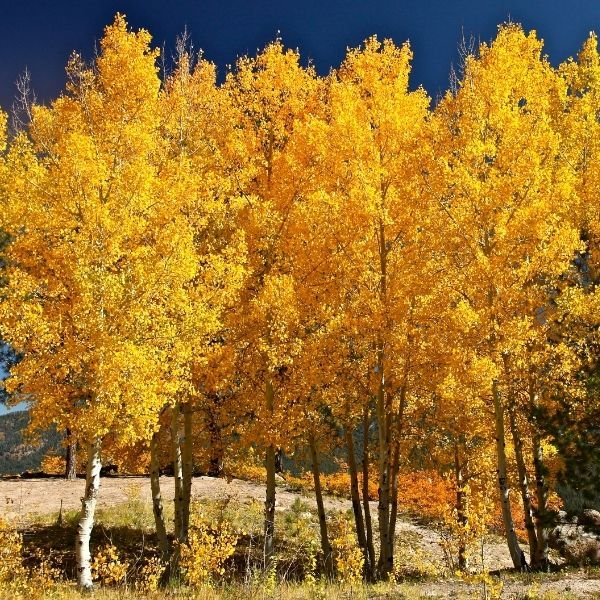
Here’s a concise information chart about Aspen (Populus tremuloides):
| Common Name | Aspen |
|---|---|
| Scientific Name | Populus tremuloides |
| Family | Salicaceae |
| Native Range | North America, including parts of Mexico |
| Height | 20-60 feet tall |
| Spread | 15-30 feet wide |
| Shape | Narrow and upright when young, round with age |
| Leaves | Small, roundish, finely toothed, tremble in the slightest breeze (hence “quaking aspen”) |
| Bark | Smooth and greenish-white when young, turning rough and gray with age |
| Flowers | Inconspicuous, catkin-like structures in spring |
| Fruit | Small capsules containing seeds |
| Fall Color | Brilliant yellow |
| Growth Rate | Fast-growing |
| Soil Requirements | Moist, well-drained soils |
| Light Requirements | Full sun |
| Uses | Wildlife habitat, landscaping, timber (soft wood), paper production |
| Special Features | Clonal reproduction through root suckers, important for wildlife (deer, elk, beaver), iconic for its quivering leaves |
The Aspen is a true icon of the North American wilderness, known for its distinctive white bark and trembling leaves that seem to dance in the slightest breeze. This deciduous tree is renowned for its ability to thrive in various climates and its remarkable clonal growth, where entire groves can be connected by a single root system.
Beyond its visual appeal, the Aspen plays a crucial role in supporting biodiversity. Its bark and leaves provide food for numerous species, while its groves create habitats for small mammals and birds. In the fall, the Aspen puts on a stunning display of golden foliage, making it a popular choice for residential and public landscapes alike.
7. American Beech (Fagus grandifolia)
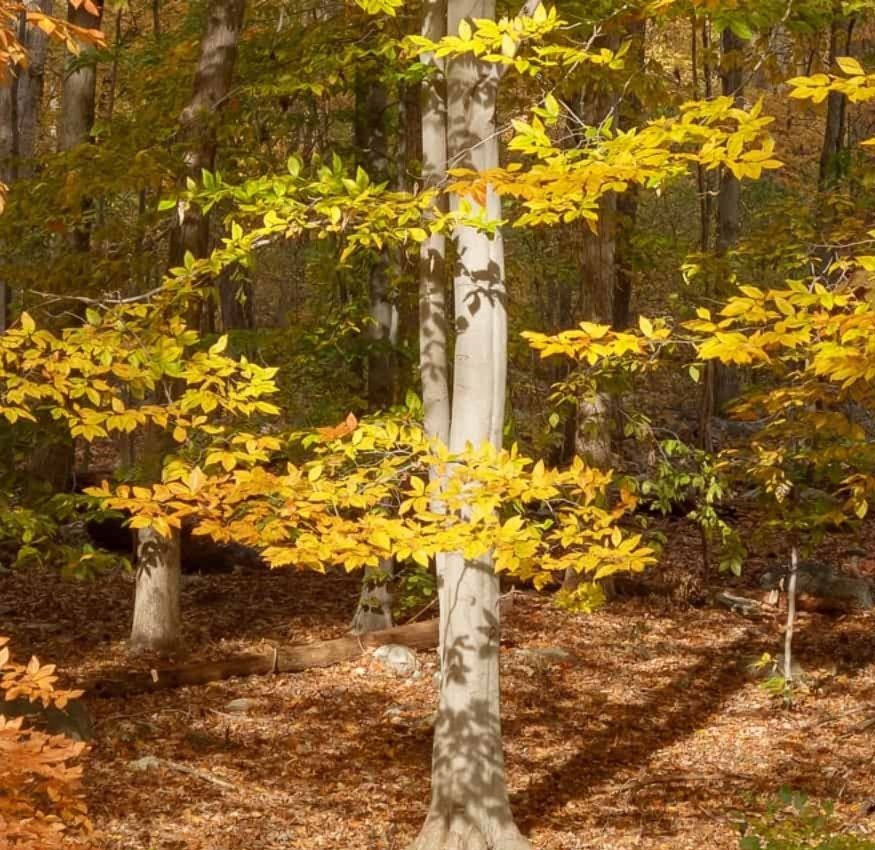
Here’s a concise information chart about the American Beech (Fagus grandifolia):
| Common Name | American Beech |
|---|---|
| Scientific Name | Fagus grandifolia |
| Family | Fagaceae |
| Native Range | Eastern North America |
| Height | 50-80 feet tall |
| Spread | 40-70 feet wide |
| Shape | Broadly oval to rounded |
| Leaves | Simple, alternate, elliptical, toothed margins, shiny dark green in summer, turning golden bronze in fall |
| Bark | Smooth, gray, with prominent horizontal lenticels |
| Flowers | Insignificant, appearing in spring before leaves |
| Fruit | Triangular nuts enclosed in spiky husks (beechnuts), ripen in fall |
| Growth Rate | Slow to moderate |
| Soil Requirements | Moist, well-drained |
| Light Requirements | Part shade to full sun |
| Uses | Shade tree, ornamental, timber (hard wood), wildlife habitat |
| Special Features | Long-lived, iconic smooth gray bark, supports a variety of wildlife, including birds and mammals |
The American Beech is a true marvel of nature, renowned for its smooth, gray bark and graceful, spreading branches. This deciduous tree is native to eastern North America and can reach heights of up to 100 feet (30 meters), creating a majestic presence in any landscape.
One of the standout features of the American Beech is its stunning foliage display. In the spring, the tree is adorned with delicate, light green leaves that gradually turn to a deep, rich green in summer. Come fall, the foliage transforms into a brilliant array of golden and copper hues, creating a breathtaking spectacle.
Beyond its visual appeal, the American Beech is also valued for its ecological significance. Its nuts and seeds provide sustenance for a wide range of wildlife, including squirrels, chipmunks and various bird species. When incorporated into a wildlife-friendly garden, the American Beech can serve as a vital food source and habitat for local fauna.
8. Ash (Fraxinus)
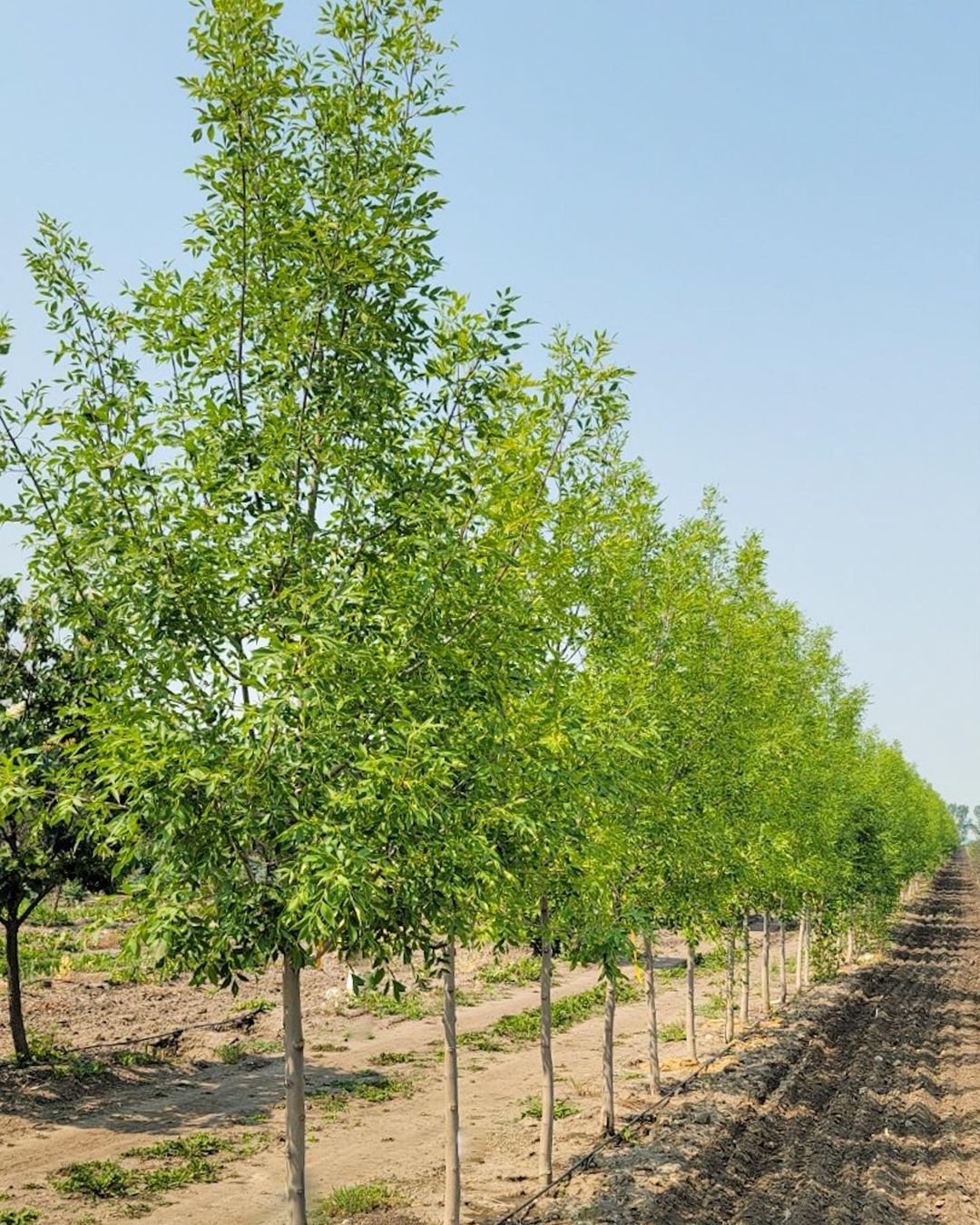
Here’s a concise information chart about Ash trees (Fraxinus):
| Common Name | Ash |
|---|---|
| Scientific Name | Fraxinus spp. |
| Family | Oleaceae |
| Native Range | Northern Hemisphere, various species globally |
| Height | Varies by species; typically 50-80 feet tall |
| Spread | Varies by species; typically 30-50 feet wide |
| Shape | Rounded to upright depending on species |
| Leaves | Compound, opposite arrangement, typically with 5-9 leaflets |
| Bark | Smooth when young, becoming furrowed and corky with age |
| Flowers | Inconspicuous, small, often appearing in clusters before leaves emerge |
| Fruit | Single-winged seeds (samara) |
| Fall Color | Varies by species; typically yellow to purple |
| Growth Rate | Moderate |
| Soil Requirements | Well-drained |
| Light Requirements | Full sun to part shade |
| Uses | Shade tree, timber (hard wood), urban landscaping, baseball bats |
| Special Features | Some species are susceptible to diseases like emerald ash borer (Agrilus planipennis), important in ecological habitats |
Kicking off our list is the elegant Ash tree, a genus that encompasses several species native to various parts of the world. These deciduous trees are known for their compound leaves, attractive bark patterns, and their ability to thrive in a wide range of conditions.
One of the most well-known members of the Ash family is the White Ash (Fraxinus americana), a stately tree that can reach heights of up to 80 feet (24 meters). Its dense foliage provides ample shade, making it a popular choice for parks, streets and residential landscapes.
While the Ash tree is valued for its ornamental qualities, it also has practical applications. Its strong, flexible wood is widely used for furniture, tool handles and even baseball bats. Incorporating an Ash tree into your landscape can add both beauty and functionality.
9. Avocado (Persea americana)
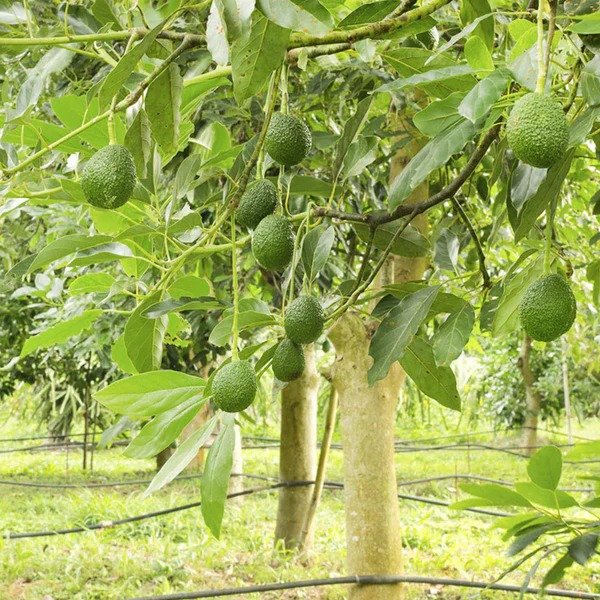
Here’s a concise information chart about Avocado (Persea americana):
| Common Name | Avocado |
|---|---|
| Scientific Name | Persea americana |
| Family | Lauraceae |
| Native Range | Central and South America |
| Height | Up to 20-30 meters (65-100 feet) in the wild |
| Leaves | Evergreen, elliptical, leathery |
| Flowers | Small, greenish-yellow, in clusters |
| Fruit | Single-seeded berry (avocado) |
| Bark | Smooth, gray to brown |
| Growth Rate | Moderate |
| Soil Requirements | Well-drained, fertile |
| Light Requirements | Full sun |
| Uses | Culinary (fruit), ornamental (tree), economic (agriculture) |
| Special Features | Cultivated worldwide for its nutritious fruit, high in healthy fats; trees are sensitive to cold temperatures and require protection in cooler climates |
While often associated with its delicious fruit, the Avocado tree itself is a true sight to behold. Native to Mexico and Central America, this evergreen tree can grow up to 60 feet (18 meters) tall, boasting a dense canopy of glossy, green leaves.
In addition to its ornamental value, the Avocado tree holds significant cultural and economic importance. Its fruit is a staple in many cuisines around the world and is renowned for its nutritional benefits, including being a rich source of healthy fats and vitamins.
10. American Elm (Ulmus americana)
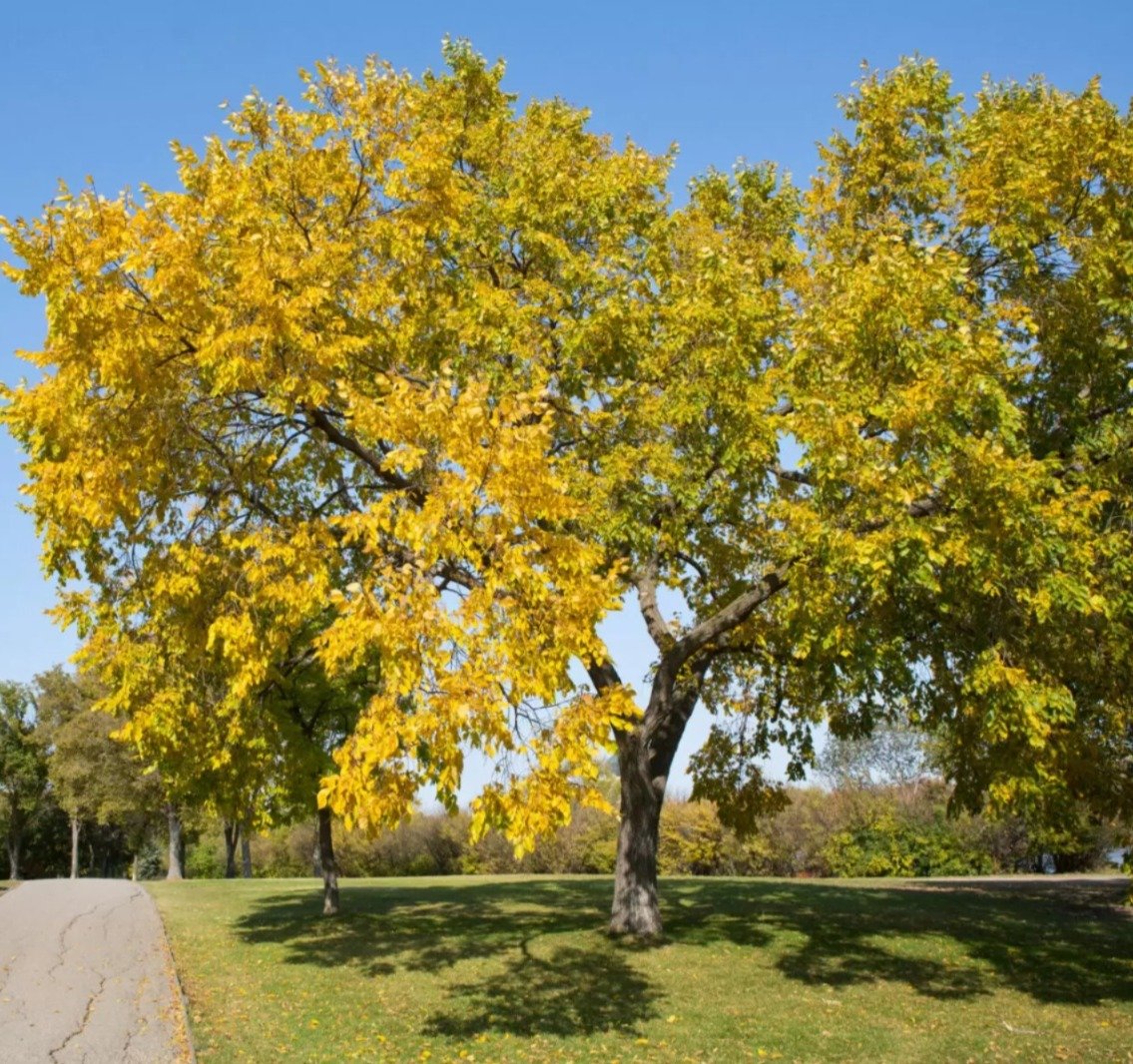
Here’s a concise information chart about the American Elm (Ulmus americana):
| Common Name | American Elm |
|---|---|
| Scientific Name | Ulmus americana |
| Family | Ulmaceae |
| Native Range | Eastern and Central North America |
| Height | 60-80 feet tall |
| Spread | 40-60 feet wide |
| Shape | Vase-shaped canopy |
| Leaves | Alternate, oval with serrated edges, doubly toothed, asymmetrical base |
| Bark | Grayish-brown with flat ridges and diamond-shaped fissures |
| Flowers | Inconspicuous, appearing in early spring before leaves |
| Fruit | Rounded samara (winged seed) |
| Fall Color | Yellow in autumn |
| Growth Rate | Moderate |
| Soil Requirements | Moist, well-drained |
| Light Requirements | Full sun to part shade |
| Uses | Shade tree, ornamental, historically used for timber (wood used in furniture and veneer) |
| Special Features | Once widely planted as a street and shade tree until devastated by Dutch elm disease (DED); resistant cultivars are now available |
The American Elm (Ulmus americana) is a stately deciduous tree native to eastern and central North America. Long known as one of the most graceful elm varieties, its tall form and arching branches create a distinctive vase-like shape.
While the American elm was devastated for many decades by Dutch elm disease, considerable progress has been made in developing disease-resistant cultivars. Many nurseries and specialty growers now offer these improved elms for both landscape and reforestation purposes.
Whether the stately American Elm, exotic Acacia or rustic Red Alder, the beauty of these iconic “A” trees breathed new life into the traditions of arborists and tree-lovers across the continent. Their exquisite forms, distinctive branching habits and remarkable resilience continue to charm and delight naturalists and plant enthusiasts alike.
By exploring the natural world’s incredible diversity of plant life, we gain not just a deeper appreciation for the wonders of creation. profound respect for the patience and knowledge of those whose life’s work transcends the mundane, elevating “common” flora to the realm of the extraordinary.

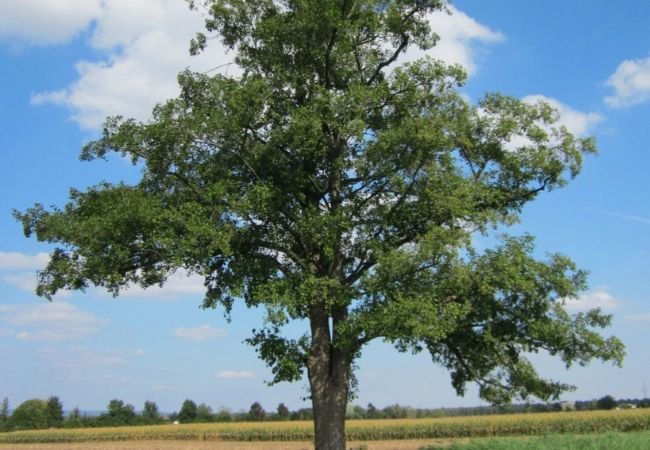

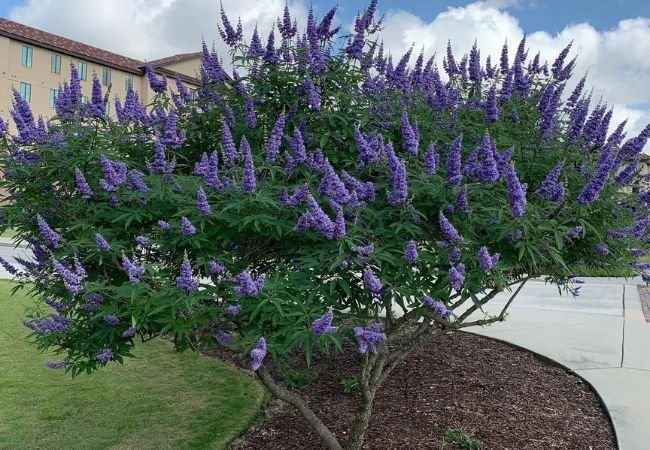
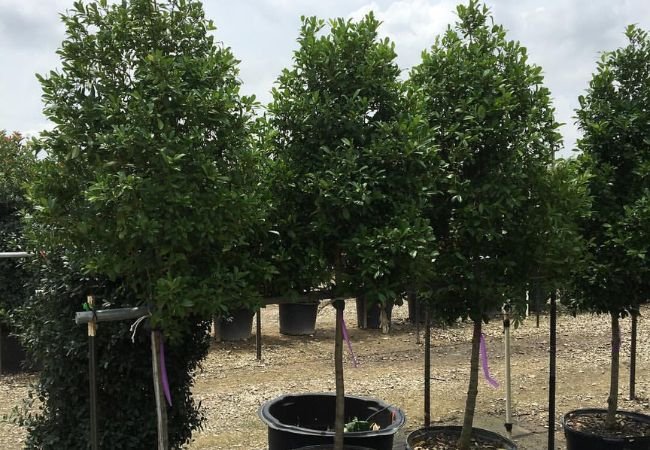
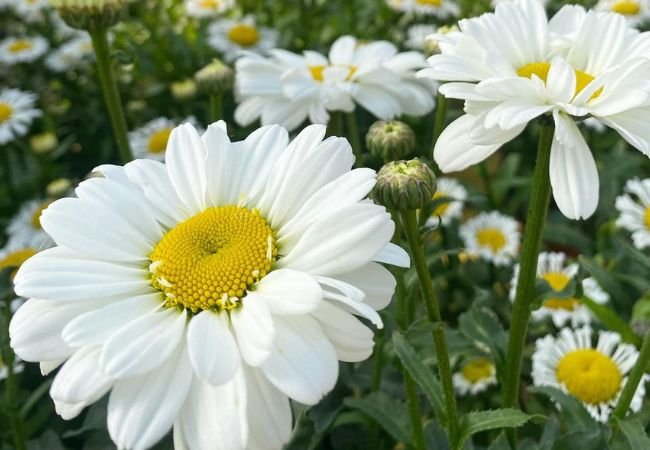
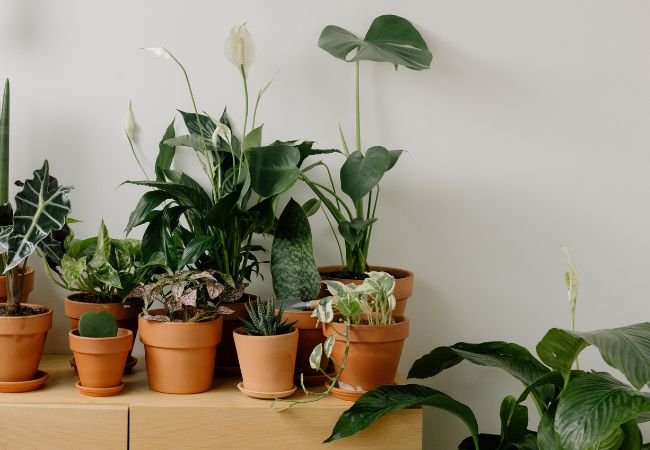
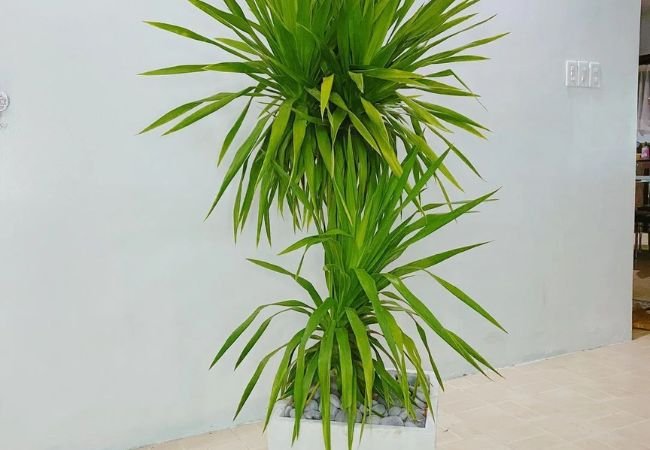

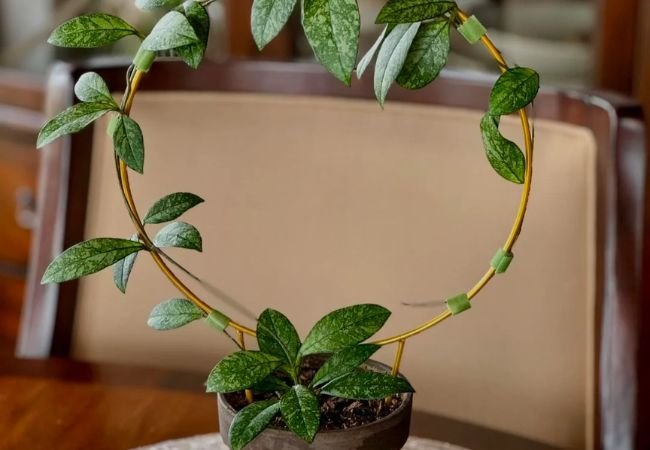
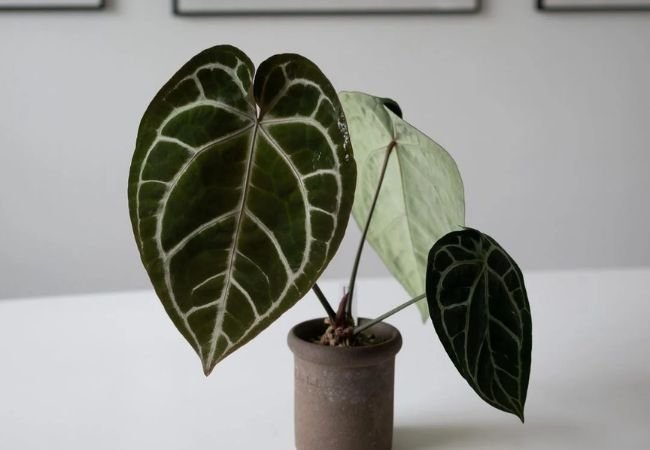
[…] flowers are beautiful plants that catch your eye. They grow tall and have many small flowers on one stem. These flowers look […]
[…] screens: Plant in rows to create a beautiful, natural privacy […]
[…] that we’re familiar with this beautiful tree, let’s explore how to make it thrive in your […]
[…] that we’re acquainted with this beautiful shrub, let’s explore how to make it thrive in your […]